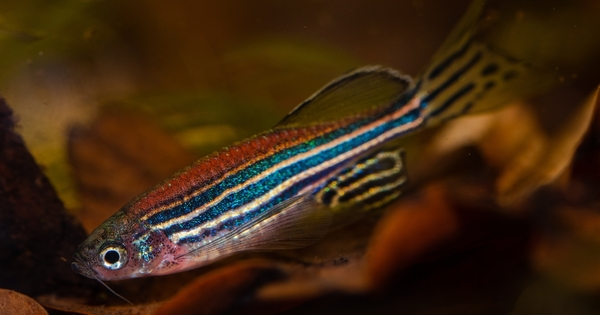Queen Mary University of London researchers have demonstrated that zebrafish can provide genetic baz1b clues to the evolution of social behaviors in humans and domesticated species. The study, published in iScience, focused on genetically modified zebrafish that were unable to produce the baz1b protein. The findings suggest that the gene is not only at the root of physical and behavioral changes in fish and other domesticated species, but also of human social relationships.
Domesticated species, such as dogs and cats, differ genetically from wild-type counterparts, including variation in the baz1b gene. These genetic changes are associated with physical and behavioral characteristics such as smaller facial features such as skulls and teeth, as well as being more sociopositive, less aggressive, and fearful.
However, research has shown that modern humans domesticated themselves after splitting from their extinct relatives, the Neanderthals, and Denisovans. We experienced similar physical and behavioral changes as a result. All of these changes have been linked to the fact that domesticated animals have fewer neural crest stem cells than wild animals.
The Queen Mary team’s research expands on this by investigating the effects of removing baz1b gene function on neural crest development and social behavior. The mutant zebrafish studied were found to be more socially prone than their functional baz1b counterparts. They demonstrated an increased proclivity to interact with members of the same species, though the differences between the two types of zebrafish were no longer discernible after three weeks.
Our research backs up the existing hypothesis that behavioral and morphological changes that came with domestication in animals and humans can be traced to the under-development of neural crest stem cells.
Jose Vicente Torres Perez
In addition to being more sociable, the mutant zebrafish displayed distinct facial changes later in life. Changes in eye length and width, a protruding forehead, and a shorter snout were among them. This was accompanied by a reduction in anxiety-related behaviors.
To measure this, the researchers examined the zebrafish’s response to a brief flash of light, specifically, the distance traveled over a five-minute period following the flash, as well as their response to an acoustic startle and their response when exposed to a new environment. In all cases, the mutant zebrafish recovered more quickly following a change in condition, indicating less fear-related reactivity.
The mutant zebrafish also showed mild under-development of the neural crest at larval stages. The research determined that in zebrafish the baz1b gene impacts both morphological and behavioral characteristics associated with the domestication syndrome in other species.

Jose Vicente Torres Perez, a co-author from the Queen Mary University of London and the University of Valencia, said: “Since the process of self-domestication, which allowed modern humans to form larger social groups, among other characteristics, is similar to the process of domestication in other “domesticated” species, our research has the potential to help us unravel the biological roots governing these behaviors.
“Our research backs up the existing hypothesis that behavioral and morphological changes that came with domestication in animals and humans can be traced to the under-development of neural crest stem cells.”
Professor Caroline Brennan, lead author, and Professor of Molecular Genetics at the Queen Mary University of London added: “This study offers an interesting perspective into the origins of how we interact with others. While carrying the conclusions from zebrafish over to other vertebrates might be challenging, comparative studies such as these give insight into the evolution of human cognition.”
Zebrafish were partly chosen for the research because around 80% of genes associated with human diseases have a corresponding orthologue — a gene in a different species that evolved from a common ancestor – making zebrafish an ideal model in which to study the genetics and neuronal circuitry underlying behavior.
















